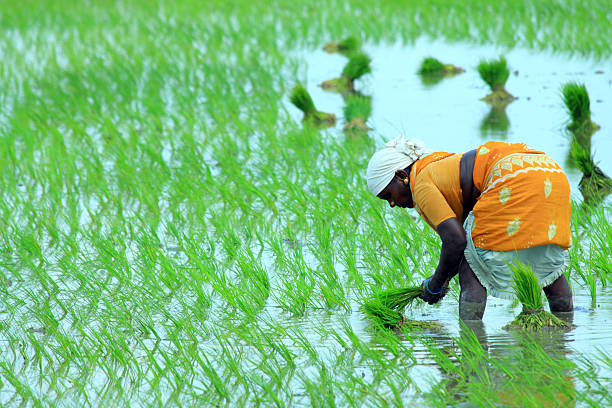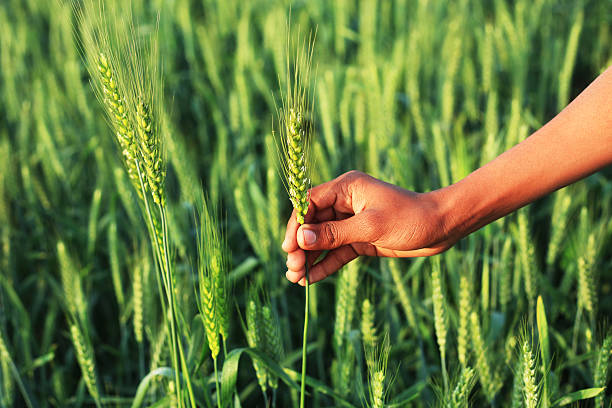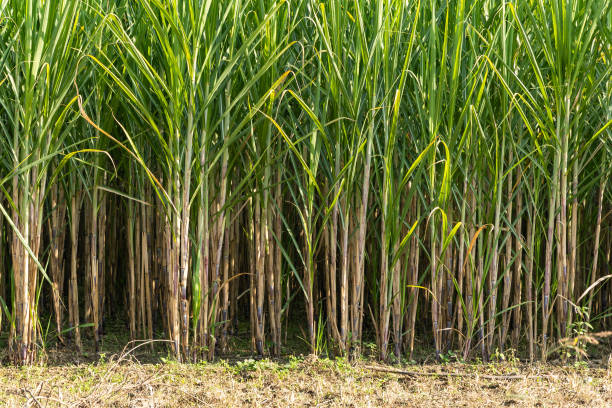Agriculture is the backbone of India’s economy, providing employment and livelihood to more than half of the country’s population. With diverse climatic conditions, fertile soil, and a rich agricultural heritage, India has emerged as a global leader in agricultural production. From traditional subsistence farming to modern agribusiness, Indian agriculture has undergone significant transformation.
Importance of the Agricultural Sector in India
Agriculture is not just a source of food but is also deeply embedded in the Indian ethos, aligning with the philosophy of “Anna Purna Brahma” (Food is divine). The sector contributes around 17-18% to India’s Gross Domestic Product (GDP) and supports nearly 50% of the population. It not only ensures food security but also supplies raw materials to industries like textiles, sugar, and dairy, playing a vital role in rural development and poverty alleviation.
Challenges in Indian Agriculture
Despite its importance, Indian agriculture faces numerous challenges:
- Small Land Holdings: Fragmented land reduces productivity and efficiency.
- Water Scarcity: Heavy dependence on monsoon and inadequate irrigation facilities affect agricultural output.
- Soil Degradation: Excessive use of water, chemical fertilizers and pesticides depletes soil quality.
- Market Challenges: Middlemen and lack of storage infrastructure prevent farmers from getting fair prices.
- Climate Change: Erratic weather patterns, droughts, and floods result in severe losses.
Indian Agriculture: A Climate and Water-Driven Multi-Dimensional Sector
Indian agriculture is highly dynamic, adapting to changing climatic conditions and evolving crop patterns. The country has multiple water sources, including rainwater, rivers, dams, canals, and reservoirs, which play a crucial role in farm productivity. Water is the lifeline of agriculture, and efficient management of this resource is essential for sustainable growth.
Each region in India has unique soil, water availability, and climate conditions, making it suitable for specific crops:
- Vidarbha and Marathwada (Maharashtra): Known for high-quality cotton due to their unique soil and climate conditions.
- Punjab, Haryana, and Uttar Pradesh: Major producers of wheat and mustard.
- Telangana, Uttar Pradesh, and West Bengal: Lead in rice production.
- Madhya Pradesh and Punjab: Dominant in pulse cultivation.
- Uttar Pradesh and Maharashtra: Top sugarcane-producing states.
Farmers consider these geographical and climatic factors while planning their crop cycles. The central and state governments also support them through various agricultural schemes. However, traditional water management techniques are still widely relied upon.
The Role of Water Management in Agriculture
Countries like Israel have revolutionized agriculture through Precision Water Management, adopting advanced irrigation technologies. Micro-irrigation and scientific water distribution systems have enabled Israel to achieve high productivity with minimal water usage. India, too, can become a global leader in quality agricultural production by emphasizing water management.
Future Path for Indian Agriculture
Modernization, sustainable farming practices, and value-added agribusiness are essential for the bright future of Indian agriculture. Efficient water management, strategic planning of water resources, and policy-making with water conservation at its core are crucial. Farmers must be encouraged to use drip irrigation and other micro-irrigation techniques to optimize water usage. Policymakers should enforce strict water management policies, ensuring equitable distribution between drought-prone and water-abundant regions. If national and state governments take up this challenge effectively, India can achieve sustainable agricultural growth.
The resilience of Indian farmers is unmatched. Strengthening supply chains, developing digital agricultural markets, and promoting agripreneurship will increase farmers’ income and ensure national food security. With the right policies, research, and collective effort, Indian agriculture can achieve remarkable progress.
Conclusion
India is the only country in the world with three distinct seasons—summer, monsoon, and winter—deeply influencing its crop patterns. The country’s dependence on monsoons makes water management the key to agricultural success. By integrating modern technology, sustainable farming techniques, and government support, India can achieve significant agricultural advancements. Indian agriculture will continue to be the foundation of the nation’s progress.
– Vijaykumar M. Sarur
M.Sc. Agro-chemicals & Pest Management



